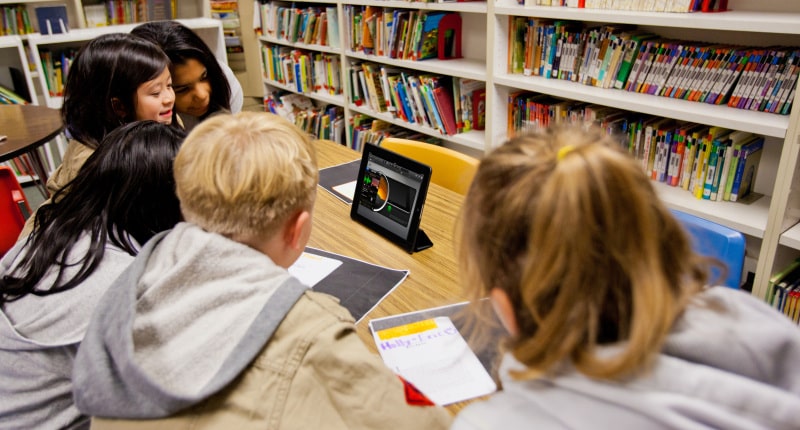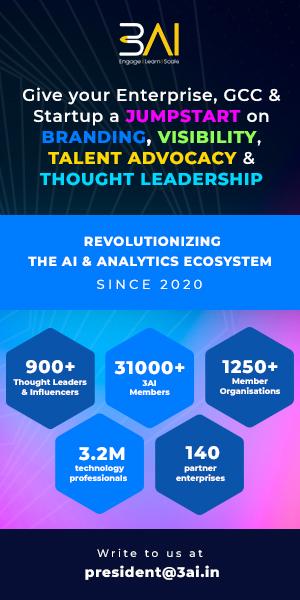Role of Analytics in Education
3AI November 11, 2020

Technologies in the form of cloud computing, mobility, social networking and information management are prompting the industry of education to move beyond practices of management, administration and instruction that dominate the traditional brick-and-mortar paradigm. Students, CIOs, other education leaders and those who market solutions to education now live in a world of choice that is exemplified by:
- The proliferation of the tablet form factor
- The growth of online instruction delivered both on- and off-campus
- The deployment of administrative and instructional solutions that the institution or school agency does not develop, host or even own
Such changes, however, more or less fit comfortably within the construct of 20th-century education practices. There have also been other technology-related innovations in education practice such as the flipped classroom, which represents a change in which learning activities are conducted off-campus and those that remain in the classroom.
Look for transformative practices — that is, significant differences in path and pace. Soon to be gone are the days when all solutions and other educational resources or services come from — or through — the institution’s or the school district’s data center or infrastructure. Time to deployment will decrease and become less dependent on the skill set or availability of IT staff. IT’s role will change from development and maintenance to customer relationship and vendor management. In the instructional environment, the pathway to learning will be supported by but not dictated by the teacher. Instruction will focus on the needs and preferences of the learner as the pace — that is, the time required to complete or gain mastery of learning tasks — is personalized to the student rather than to institutionalized seat-time requirements or the lock-step approach to instruction meant to keep an entire classroom working on the same activities at the same time.
Recommendations for CIOs
CIOs, educational leaders and providers must see the transformation coming and leverage the opportunity that mobile, cloud, social and information technologies present to their market — whether that means competing for students or for market share in the emerging 21st-century education industry. They should be motivated to build a business case for deploying cloud-based solutions as they replace legacy administrative, management and instructional applications. They should also look into engaging other education leaders to leverage the Nexus of Forces to promote and adopt significant innovations that change both the path and the pace of administrative, managerial and instructional services.
The role of the Nexus of Forces
The nexus of mobile, cloud, social and information management technologies is evident in education practice in all areas of management, administration and instruction. Changes prompted by the nexus are setting the stage for transforming the education environment from a 20th-century mindset to a 21st-century paradigm. Institutions of higher education and K-12 education agencies are opting for exo-structure, such as cloud-based applications, rather than hosting purchased or self-developed solutions. All areas of education are considering external sources for instructional materials and open educational resources (OER), rather than depending solely on enterprise-owned or developed content. Online learning delivered on- and off-campus, on mobile devices as well as on traditional desktops — and often involving collaboration between and among learners — is growing as education institutions and agencies respond to stakeholder preferences for personalization in an era of shrinking or stagnant budgets.
The Plight of Traditional Schooling Models
Budgets for primary and secondary school (K-12) agencies will remain stagnant or be reduced over the next three years. School agencies spend more than 85% on salaries and benefits. Regardless of the budget implications, stakeholders will demand a personalized learning pathway for students. Personalized learning is ideally a competency-based approach that utilizes the learner’s characteristics and achievement data to prescribe and deliver the next learning activity. Under present staffing ratios, teachers cannot be expected to develop lessons for each student’s highly personalized learning plan. Reducing the student-to-teacher ratio to accommodate a personalized learning environment is not an option due to budget constraints and the dwindling pool of teaching talent. This is going to hurt the effectiveness and share of students still sticking to the traditional schooling models. Online solutions that use an algorithm to provide learning activities — that is, lessons to students based on factors such as individual characteristics and previous level of attainment — relieve teachers from planning every lesson and frees them to coach, tutor and mentor students as they work on assignments.
Traditional Schooling Models face either extinction or evolution. Schools will have to decide whether to ignore the demand for personalized instruction, overload teachers with demands to provide individualized lesson plans, or provide online lessons and resources for the classroom. Initially, schools will place demands on the teachers to use available student data to personalize instruction using currently available materials and techniques. The first wave of online solutions targeted at personalizing instruction will provide repositories of lessons — and formative assessments — aligned with curricula goals. Teachers will be expected to use data and act as a broker in assigning instructional activities to each student or group of students. The role of the teacher will begin to change from a lesson planner and data collector and manager to that of a consumer of data and an informed coach, tutor or mentor. The degree of personalized instruction is impeded by the capacity of teachers to evaluate available data and make appropriate assignments. Vendors compete to provide an online system that uses an algorithmic approach to assigning instructional activities to students. While teachers can intervene, the pipeline of assigned student activities is no longer constrained by teacher capacity to make individual assignments. Consequently, teachers can take on larger case loads of students as their role as coach, tutor or mentor is further refined.
The Way Forward ?
Public school organizations should recognize the competitive advantage of using online and other technology-based education solutions as a way of attracting and retaining students and optimizing individual success. CIOs and other education leaders should see the rising demand for personalized instruction as an opportunity to leverage instructional technology as an assessment, diagnostic and instructional tool and use it as the primary means of instructional delivery. Anticipate using online instruction as way of breaking the seat-time stranglehold on curriculum sequencing and using student competencies in individual disciplines as the means of moving from one level of academic pursuit to the next. CIOs and other education leaders should do an analysis of two categories of current teacher tasks:
(1) lesson preparation, assessment instrument creation, record-keeping and other generally non-student-facing activities, and
(2) time spent interacting with students on academic and instructional productivity pursuits.
Use the analysis in building the business case for deploying a truly student-centric online delivery system that maximizes professional time spent working directly with students as they pursue their individual learning pathways. Be prepared to show that the competency-based system is not only pedagogically sound — if not superior — but also economically efficient. When selecting and implementing student and instructional management systems, school leaders and CIOs should work with vendors that recognize the value of using data for guiding instruction, and are prepared to integrate data and instructional resources from a wide scope of resources.






